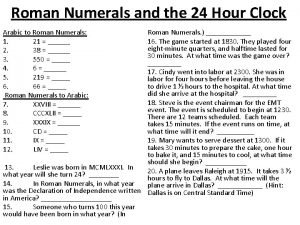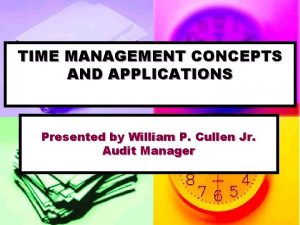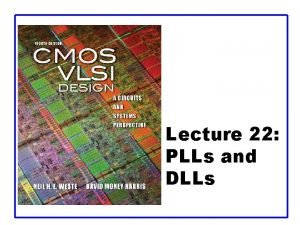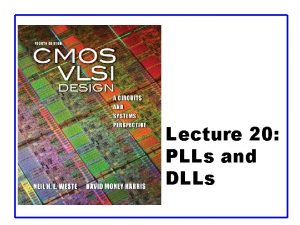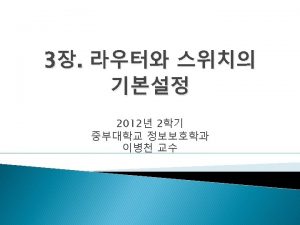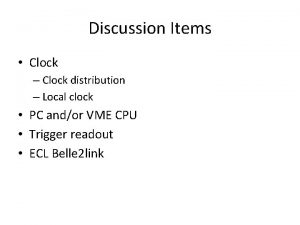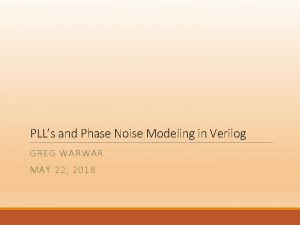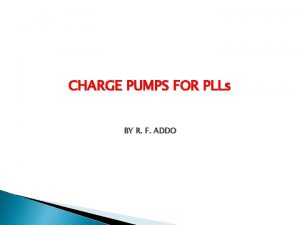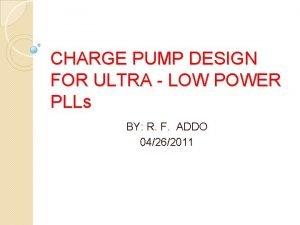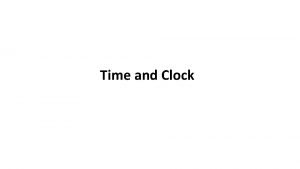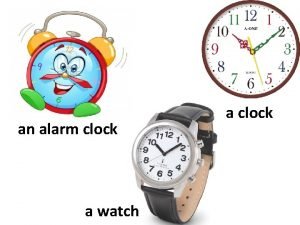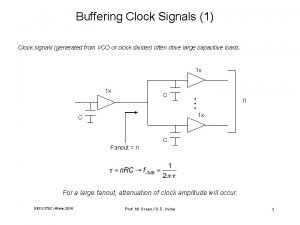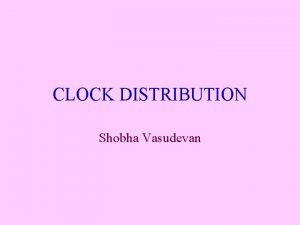Lecture 22 PLLs and DLLs Outline q Clock






















- Slides: 22

Lecture 22: PLLs and DLLs

Outline q Clock System Architecture q Phase-Locked Loops q Delay-Locked Loops 22: PLLs and DLLs CMOS VLSI Design 4 th Ed. 2

Clock Generation q Low frequency: – Buffer input clock and drive to all registers q High frequency – Buffer delay introduces large skew relative to input clocks • Makes it difficult to sample input data – Distributing a very fast clock on a PCB is hard 22: PLLs and DLLs CMOS VLSI Design 4 th Ed. 3

Zero-Delay Buffer q If the periodic clock is delayed by Tc, it is indistinguishable from the original clock q Build feedback system to guarantee this delay Phase-Locked Loop (PLL) Delay-Locked Loop (DLL) 22: PLLs and DLLs CMOS VLSI Design 4 th Ed. 4

Frequency Multiplication q PLLs can multiply the clock frequency 22: PLLs and DLLs CMOS VLSI Design 4 th Ed. 5

Phase and Frequency q Analyze PLLs and DLLs in term of phase F(t) rather than voltage v(t) q Input and output clocks may deviate from locked phase – Small signal analysis 22: PLLs and DLLs CMOS VLSI Design 4 th Ed. 6

Linear System Model q Treat PLL/DLL as a linear system – Compute deviation DF from locked position – Assume small deviations from locked – Treat system as linear for these small changes q Analysis is not valid far from lock – e. g. during acquisition at startup q Continuous time assumption – PLL/DLL is really a discrete time system • Updates once per cycle – If the bandwidth << 1/10 clock freq, treat as continuous q Use Laplace transforms and standard analysis of linear continuous-time feedback control systems 22: PLLs and DLLs CMOS VLSI Design 4 th Ed. 7

Phase-Locked Loop (PLL) q System q Linear Model 22: PLLs and DLLs CMOS VLSI Design 4 th Ed. 8

Voltage-Controlled Oscillator q VCO 22: PLLs and DLLs CMOS VLSI Design 4 th Ed. 9

Alternative Delay Elements 22: PLLs and DLLs CMOS VLSI Design 4 th Ed. 10

Frequency Divider q Divide clock by N – Use mod-N counter 22: PLLs and DLLs CMOS VLSI Design 4 th Ed. 11

Phase Detector q Difference of input and feedback clock phase q Often built from phase-frequency detector (PFD) 22: PLLs and DLLs CMOS VLSI Design 4 th Ed. 12

Phase Detector 22: PLLs and DLLs CMOS VLSI Design 4 th Ed. 13

Phase Detector q Convert up and down pulses into current proportional to phase error using a charge pump 22: PLLs and DLLs CMOS VLSI Design 4 th Ed. 14

Loop Filter q Convert charge pump current into Vctrl q Use proportional-integral control (PI) to generate a control signal dependent on the error and its integral – Drives error to 0 (negligible) 22: PLLs and DLLs CMOS VLSI Design 4 th Ed. 15

PLL Loop Dynamics q Closed loop transfer function of PLL q This is a second order system q wn indicates loop bandwidth q z indicates damping; choose 0. 7 – 1 to avoid ringing 22: PLLs and DLLs CMOS VLSI Design 4 th Ed. 16

Delay Locked Loop q Delays input clock rather than creating a new clock with an oscillator q Cannot perform frequency multiplication q More stable and easier to design – 1 st order rather than 2 nd q State variable is now time (T) – Locks when loop delay is exactly Tc – Deviations of DT from locked value 22: PLLs and DLLs CMOS VLSI Design 4 th Ed. 17

Delay-Locked Loop (DLL) q System q Linear Model 22: PLLs and DLLs CMOS VLSI Design 4 th Ed. 18

Delay Line q Delay input clock q Typically use voltage-controlled delay line 22: PLLs and DLLs CMOS VLSI Design 4 th Ed. 19

Phase Detector q Detect phase error q Typically use PFD and charge pump, as in PLL 22: PLLs and DLLs CMOS VLSI Design 4 th Ed. 20

Loop Filter q Convert error current into control voltage q Integral control is sufficient q Typically use a capacitor as the loop filter 22: PLLs and DLLs CMOS VLSI Design 4 th Ed. 21

DLL Loop Dynamics q Closed loop transfer function of DLL q This is a first order system q t indicates time constant (inverse of bandwidth) – Choose at least 10 Tc for continuous time approx. 22: PLLs and DLLs CMOS VLSI Design 4 th Ed. 22
 Fast clock to slow clock synchronization
Fast clock to slow clock synchronization Sixty minutes make an hour
Sixty minutes make an hour 01:640:244 lecture notes - lecture 15: plat, idah, farad
01:640:244 lecture notes - lecture 15: plat, idah, farad Lecture outline example
Lecture outline example Lecture outline example
Lecture outline example Lecture outline example
Lecture outline example Lecture outline meaning
Lecture outline meaning Topic sentence sandwich
Topic sentence sandwich 24 hour clock roman numerals
24 hour clock roman numerals Concepts of time management
Concepts of time management Metaphor figure of speech
Metaphor figure of speech Routing in physical design
Routing in physical design Electricity and magnetism lecture notes
Electricity and magnetism lecture notes Power system dynamics and stability lecture notes
Power system dynamics and stability lecture notes Microbial physiology and metabolism lecture notes
Microbial physiology and metabolism lecture notes Ternology
Ternology Cloud computing lecture
Cloud computing lecture Fits and tolerances chart
Fits and tolerances chart Financial markets and institutions ppt
Financial markets and institutions ppt Banking and finance lecture
Banking and finance lecture Extempore and lecture
Extempore and lecture Utilities and energy lecture
Utilities and energy lecture Catherine belsey books
Catherine belsey books








